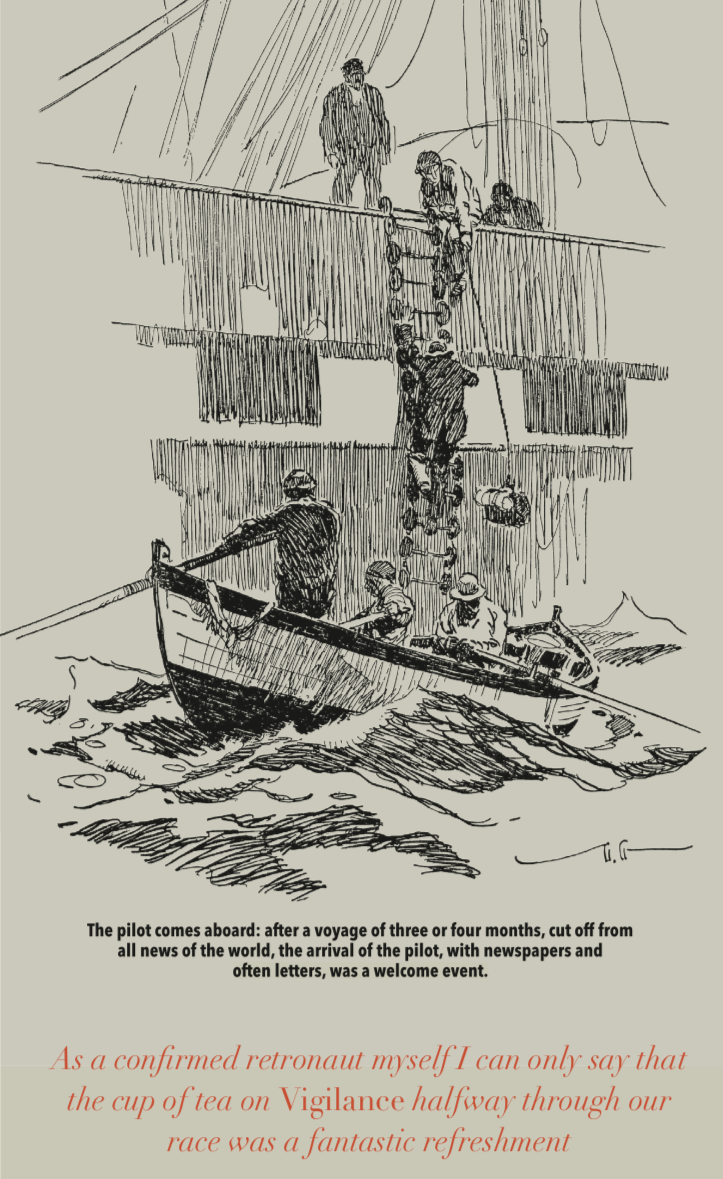It’s always impressive to see old boats being sailed in a race. I’ve just got back, a few hours ago, from witnessing the Brixham Trawlers Pilgrim, Vigilance and Provident vying for the annual King George V cup on a course in front of the town, on the blue waters of Torbay. There wasn’t enough wind to make the old ladies go; they always said the Brixham boats did not bother to leave harbour in anything less than a force six – or they couldn’t power their beam trawls across the sea bed.
But nevertheless there was a breeze and at one point we were trucking along at six knots. There were the beginnings of a discernible tilt in the rig at that point – not as much as the ‘O’ in the word sailor on our front cover logo, but then these boats were built to be as stiff as a maiden great-aunt at church and it takes quite a blow to wash their lee rails in some salt water. There’ll be more on this next issue – we can only make a very small report on p9 because our printer already has his sleeves rolled up and this is the last leaf… as usual!
There is a bit more of a working boat theme in this edition with our report on the pilot cutters and the annual Cock of the Channel race. This year they invited (and I must say this is highly unusual) they invited newer and non-original pilot cutters to take part with the handful of originals – most well over a hundred years old by now. Luke Powell – who has probably done more for the revival of pilot cutters with his new builds than anyone else, was delighted to take part.
“We went and raced and it was brilliant; I think we came second, but in the end they could not give us a prize,” said Luke, who then turned his ship (Agnes 2003) around and doubled back round the toe of Land’s End to race in his home event at the St Mawes Pilot Cutter Review.
As we put more time and technology between ourselves and boats like these it seems increasingly rare to be sailing them. Modern sailing is all about going three times the speed of the wind and literally flying over the waves on foils that reduce the wetted surface area to nearly nothing. And no doubt the pilot on the right here, getting into his mid-fifties and feeling his heart trying to leap into his mouth as he jumps and scrambles up the swaying rungs of a ship’s boarding ladder, would probably regard the new classic sailor’s approach as being too retrograde for his own good.
As a confirmed retronaut myself I can only say that the cup of tea on Brixham’s last-built sailing trawler Vigilance halfway through the afternoon and about halfway through our race was a fantastic refreshment, and an aspect of sailing I have always been delighted by. And to that I’d add cooking aboard, reading or just general living while you are making progress across a piece of sea, or an ocean.
And in many ways I think I would always prefer that, certainly when sailing offshore, and hence the need to know and understand these seaworthy boats that looked after their crews so well – through almost any kind of weather. These boats always need helpers by the way. It may not be the fastest sailing but it will refresh body and soul in other ways. DH
From issue 10 July 2016
Image: The Pilot by Gordon Grant


